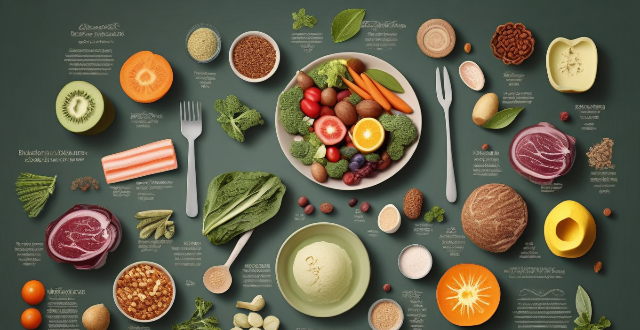Climate change affects nutrition and dietary health by altering food production, impacting crop yields, nutrient content, pest and disease pressure, and the availability and accessibility of food. Sustainable agricultural practices and adaptation are crucial for mitigating these effects and ensuring global food security.

The Impact of Climate Change on Nutrition and Dietary Health through Changes in Food Production
Climate change is a global phenomenon that affects various aspects of life, including nutrition and dietary health. One of the ways it influences these areas is through changes in food production. This article will discuss how climate change affects food production and its subsequent impact on nutrition and dietary health.
Changes in Crop Yields
Decreased Yields
- Drought: As temperatures rise, water availability decreases, leading to drought conditions that can significantly reduce crop yields.
- Extreme Weather Events: Storms, floods, and other extreme weather events can damage crops, reducing overall yields.
Increased Yields
- Carbon Dioxide Fertilization: Elevated levels of carbon dioxide (CO2) can increase plant growth, potentially leading to higher crop yields.
- Extended Growing Seasons: Warmer temperatures may extend growing seasons in some regions, allowing for additional harvests.
Changes in Nutrient Content
Decreased Nutrient Content
- Elevated CO2 Levels: Higher CO2 levels can lead to lower nutrient content in crops, such as reduced protein levels in wheat and rice.
- Temperature Fluctuations: Extreme temperatures can negatively impact nutrient synthesis in plants, resulting in decreased nutrient content.
Increased Nutrient Content
- Improved Soil Quality: In some cases, climate change may improve soil quality, leading to increased nutrient content in crops.
- Enhanced Photosynthesis: Elevated CO2 levels can enhance photosynthesis, potentially increasing nutrient content in some crops.
Changes in Pests and Diseases
Increased Pest and Disease Pressure
- Altered Distribution: Climate change can alter the distribution of pests and diseases, introducing new threats to crops.
- Rapid Reproduction: Warmer temperatures can lead to faster reproduction rates for pests, increasing their populations and causing more damage to crops.
Decreased Pest and Disease Pressure
- Reduced Survival Rates: In some cases, climate change may make conditions less favorable for certain pests and diseases, reducing their impact on crops.
Changes in Availability and Accessibility of Food
Decreased Availability and Accessibility
- Reduced Affordability: Decreased crop yields and increased input costs can make food less affordable for consumers.
- Loss of Biodiversity: Climate change can lead to the loss of important food sources, such as fisheries and forests, reducing the availability and accessibility of certain foods.
Increased Availability and Accessibility
- Improved Logistics: Warmer temperatures may improve transportation logistics in some regions, making it easier to distribute food.
- Alternative Food Sources: Climate change can create opportunities for new food sources, such as seaweed farming or vertical agriculture, increasing the availability and accessibility of alternative foods.
In conclusion, climate change has a significant impact on nutrition and dietary health through changes in food production. These changes include variations in crop yields, nutrient content, pest and disease pressure, and the availability and accessibility of food. To mitigate these effects and ensure global food security, it is essential to implement sustainable agricultural practices and adapt to the changing climate.